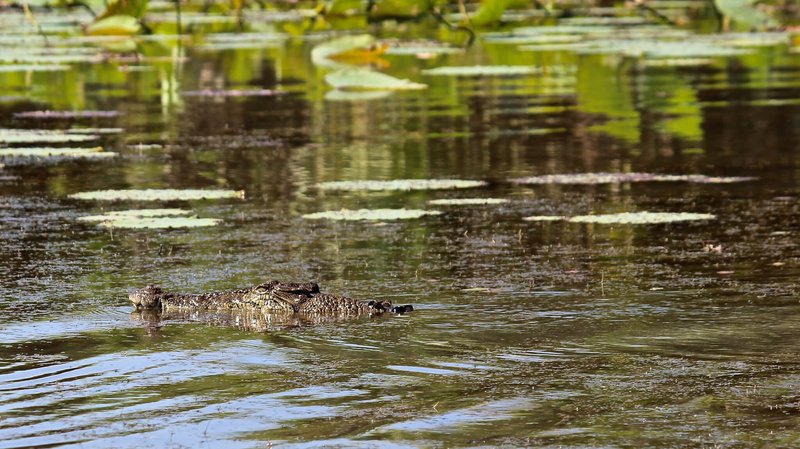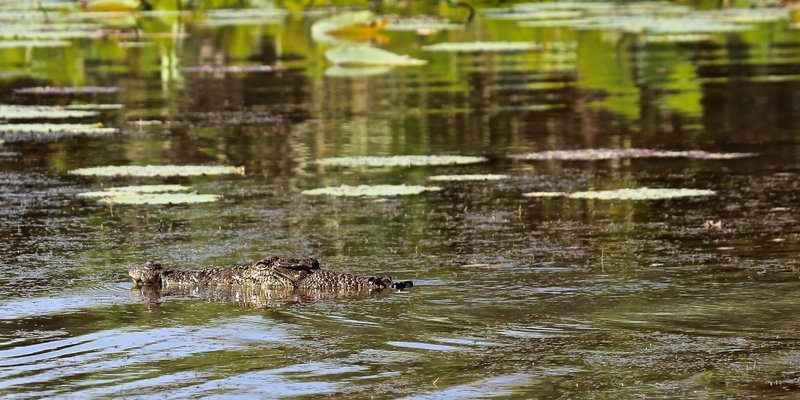
Learning about the eating habits and hunting techniques of saltwater crocodiles can give you a deeper appreciation for these ancient reptiles. Think of it like understanding the way a well-oiled machine works, where each part plays a crucial role in the big picture. Let’s dive into their world and see what makes them such skilled predators.
Diet of the Saltwater Crocodile
Saltwater crocodiles are opportunistic feeders, meaning they won’t shy away from almost anything that fits in their mouth. Their diet is incredibly varied, allowing them to thrive in diverse environments. Common prey includes:
- Fish: These reptiles love a good fish dinner. Their diet can consist of various fish species found in rivers and coastal areas.
- Birds: They’re known to snatch birds that venture too close to the water, demonstrating their agility and speed.
- Mammals: From smaller animals like rodents to larger creatures such as pigs and deer, saltwater crocodiles have been known to hunt a range of mammals.
- Other reptiles: They’ll sometimes munch on other reptiles, including smaller crocodiles, as a part of their discerning diet.
Honestly, their varied diet ensures that they can adapt to changes in their environment. When food is scarce, their opportunistic nature allows them to switch to different prey without missing a beat. In contrast, some other predators may struggle if their favorite food source disappears.
How Saltwater Crocodiles Hunt
So how do these giants capture their meals? The hunting techniques of saltwater crocodiles are nothing short of impressive. They rely on a combination of stealth, patience, and powerful physical attributes.
These crocodiles are masters of camouflage, blending seamlessly into their surroundings. Whether they’re lurking among mangroves or lying in wait on riverbanks, their tough, scaly skin helps them become nearly invisible. This ability allows them to ambush unsuspecting prey without raising an alarm.
Here’s the thing: the saltwater crocodile can hold its breath for over an hour! This skill lets them remain submerged while waiting for the right moment to strike. Imagine the tension—waiting like a coiled spring, ready to explode when their target comes close.
The Ambush Technique
The primary hunting method for saltwater crocodiles is the ambush technique. When a saltwater crocodile spots its prey, it will remain hidden, often still as a statue.
Once the prey is close enough, the crocodile launches itself from the water, using its powerful tail for propulsion. This sudden surge can be quite shocking, making the crocodile look like a torpedo aimed at its target.
The crocodile then uses its strong jaws to catch its prey with a swift bite. They have one of the most powerful bites in the animal kingdom, making them formidable hunters. Once captured, they often drag their prey into the water to drown it or break it apart for easier consumption.
Feeding Habits and Techniques
After a successful hunt, saltwater crocodiles exhibit some fascinating feeding behaviors. Unlike many predators, they don’t chew their food. Instead, they use a technique known as death roll to tear apart larger prey. This maneuver involves spinning rapidly in the water to rip chunks of flesh off.
You might be wondering why they don’t just swallow their food whole. Well, their powerful jaws can crush bones, but they must orient their prey correctly before gulping it down. Saltwater crocodiles often eat massive meals, consuming up to half their body weight in one sitting! This enormous intake provides enough energy for days, which is why they can go long periods without eating.
Interestingly, they also play a role in their ecosystem by helping control fish populations and providing carrion for scavengers when they leave behind uneaten parts of their meals.
Seasonal Changes in Diet
Just like any other animal, saltwater crocodiles adjust their diets based on seasonal changes. During the wet season, they have more access to prey. Fish and amphibians are plentiful, so they tend to focus on these options.
In contrast, during the dry season, food can be harder to find. Saltwater crocodiles might turn to larger mammals or be more opportunistic, capitalizing on any possible meals that come their way. This adaptability has helped them thrive in various environments, from coastal areas to freshwater rivers.
Competition and Interactions
Saltwater crocodiles aren’t the only predators in their habitat, which adds an interesting dimension to their hunting behavior. They often compete with other crocodile species, such as freshwater crocodiles, and even other large carnivores like big cats or birds of prey.
In these scenarios, it’s not uncommon for larger saltwater crocodiles to establish dominance over smaller ones. They assert their territory fiercely, ensuring they have access to the best hunting grounds. When food is plentiful, these interactions may be less aggressive, but during lean times, competition can become fierce.
Here’s a surprising twist: saltwater crocodiles are known to share meals on occasion, especially if two are too large to eat alone. This surprising social behavior adds a unique layer to their hunting and feeding habits.
In a nutshell, the saltwater crocodile is an extraordinary predator with a diverse diet and remarkable hunting skills. Their ability to adapt to various prey, blend into their environments, and utilize strategic hunting methods makes them a true marvel of nature. Whether they’re lurking beneath the water’s surface or executing a perfect ambush, they showcase the art of survival.
Next time you see a documentary or come across a saltwater crocodile, you’ll appreciate the complex techniques and varied diet that allow these ancient reptiles to thrive in their ecosystems. They’ve survived for millions of years, and understanding their hunting habits and feeding behaviors helps illuminate how they fit into the natural world. It’s like witnessing a masterclass in the art of predation, and it’s just as captivating as it sounds.

